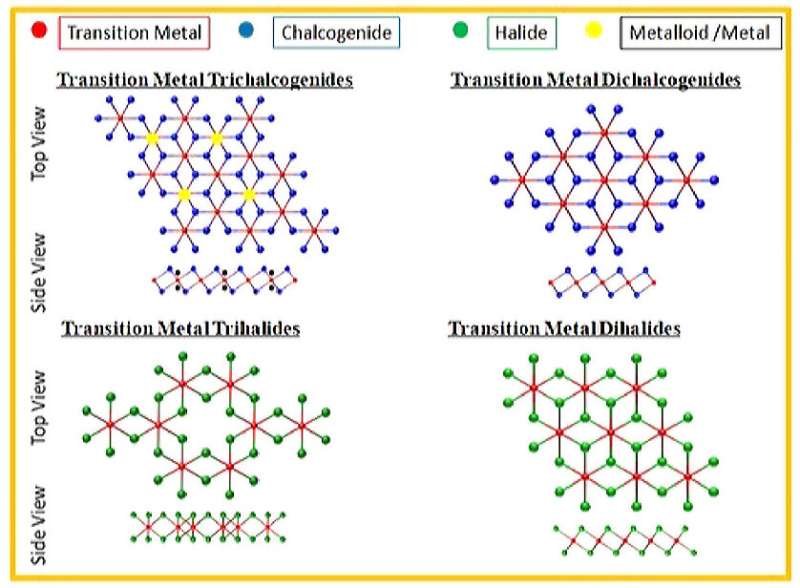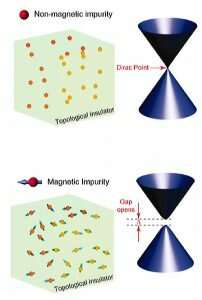Crystal structures of proposed 2D ferromagnetic materials. Credit: FLEET
A collaborative FLEET study has reviewed recent progress in 2-D ferromagnetism, and predict new, possible 2-D ferromagnetic materials.
The study also introduces possible applications of atomically-thin ferromagnets in novel dissipationless electronics, spintronics, and other conventional magnetic technologies.
The scientists propose a new method of observing 2-D ferromagnetism that could reveal new materials.
Led by Babar Shabbir (Monash University's Engineering faculty) and Muhammad Nadeem (University of Wollongong), the study also drew on FLEET expertise at the Monash Faculty of Science and Tsinghua University (Beijing).
2-D Magnetism
The inherent susceptibility of 2-D materials to thermal fluctuations poses a major challenge to achieving ferromagnetic order in such materials.
2-D ferromagnetism is interesting not just for the fundamental physics discoveries it can unlock, but as a possible 'missing ingredient' necessary for vdW heterostructure spintronics.
The ferromagnetism of robust, atomically-thin ferromagnets is thought to be enabled by magnetocrystalline anisotropy, which suppresses thermal fluctuations.
Recent ground-breaking discoveries of long-range, intrinsic ferromagnetism in 2-D materials could start a new era in the field of spintronics and conventional magnetism technologies.
Top: Topological insulator doped with TR-invariant impurities with Dirac point similar to in undoped case. Bottom: Topological insulator doped with TR-breaking impurities with broken Dirac point. Credit: FLEET
However it is very difficult to determine ferromagnetism in 2-D materials, because thermal energy inevitably penetrates into a ferromagnetic material and could excites the aligned electron spins at non-zero temperatures.
However, the scientists found that magnetic anisotropy could make it possible to observe 2-D ferromagnetism.
The paper:
- reviews recent progress in 2-D ferromagnetism
- studies the role of magnetic anisotropy in 2-D ferromagnets
- predicts new, possible 2-D ferromagnets, and how to find them
- investigates the role of ferromagnetism in topological phases
- discusses possible applications of atomically-thin ferromagnets in novel dissipationless electronics, spintronics, and other conventional magnetic technologies.
The review will assist the scientific community in its exploration of novel 2-D ferromagnetic families, potentially spawning new technologies and further improving the fundamental understanding of this fascinating area.
Long range intrinsic ferromagnetism in two dimensional materials and dissipationless future technologies was published in Applied Physics Reviews in November 2018.
More information: Babar Shabbir et al. Long range intrinsic ferromagnetism in two dimensional materials and dissipationless future technologies, Applied Physics Reviews (2018). DOI: 10.1063/1.5040694
Provided by FLEET

























